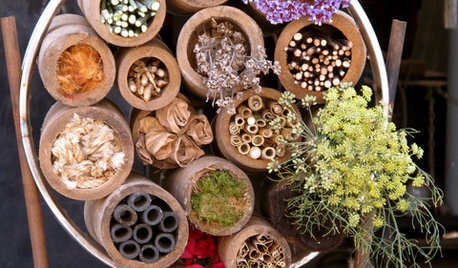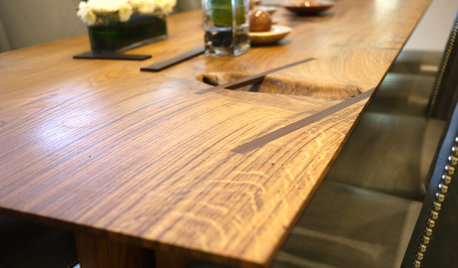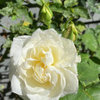What's causing these two problems?
greendreamhome
9 years ago
Related Stories

HOUSEKEEPING10 Problems Your House May Be Trying to Show You
Ignore some of these signs and you may end up with major issues. We tell you which are normal and which are cause for concern
Full Story
URBAN GARDENSGardeners Champion Nature's Cause in the City
Garden advocates and artists in San Francisco have joined forces to find creative ways to bring nature back into the urban landscape
Full Story
REMODELING GUIDESThe Hidden Problems in Old Houses
Before snatching up an old home, get to know what you’re in for by understanding the potential horrors that lurk below the surface
Full Story
DECORATING GUIDESSolve Privacy Problems With Window Film
Let the light in and keep prying eyes out with an inexpensive and decorative window film you can apply yourself
Full Story
DECORATING GUIDES5 Pet Problems Solved by Design
Design-Friendly Ideas for Pet Beds, Bowls, Doors — and yes, the Litter Box
Full Story
ECLECTIC HOMESHouzz Tour: Problem Solving on a Sloped Lot in Austin
A tricky lot and a big oak tree make building a family’s new home a Texas-size adventure
Full Story
FUN HOUZZ10 Fantasy Dining Rooms for a Good Cause
Outlandishly creative or subtle and sophisticated, these designer spaces for Serving Up Style 2013 show admirable imagination
Full Story
EVENTS20 Innovative Dollhouses for a Good Cause
Prominent architects scale down for charity, creating dollhouses to be auctioned off to help kids with disabilities
Full Story
FURNITUREWood Furniture Has Root Cause
Sustainability is just the beginning with Robin Wade's lovingly made 'rustic modern' wood furnishings
Full Story
FURNITURESlipcovers: Problem Solvers With Style
9 Great Ways to Change Up Your Look With the Ever-Practical Slipcover
Full StoryMore Discussions











greendreamhomeOriginal Author
strawchicago z5
Related Professionals
Surprise Landscape Architects & Landscape Designers · Bellflower Landscape Architects & Landscape Designers · Essex Landscape Architects & Landscape Designers · Allentown Landscape Contractors · Arden-Arcade Landscape Contractors · Cordele Landscape Contractors · Crystal Landscape Contractors · Deer Park Landscape Contractors · Eureka Landscape Contractors · Fort Mill Landscape Contractors · McLean Landscape Contractors · Paterson Landscape Contractors · Stony Brook Landscape Contractors · Tigard Landscape Contractors · Vallejo Landscape Contractorsstrawchicago z5
strawchicago z5
greendreamhomeOriginal Author
strawchicago z5
Seeingreen